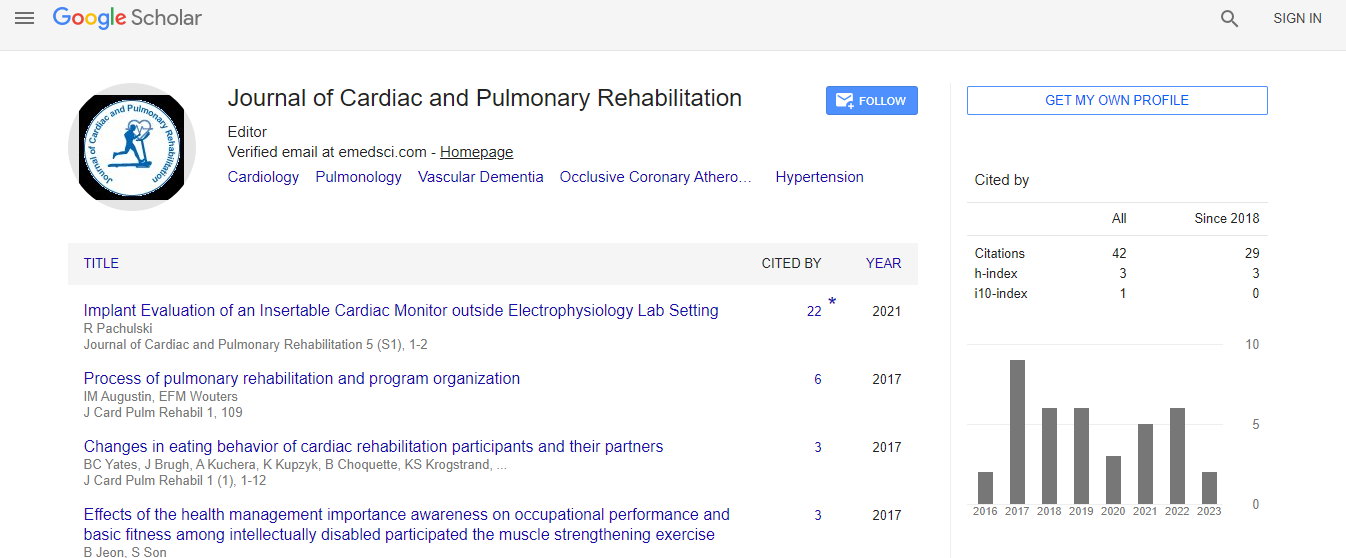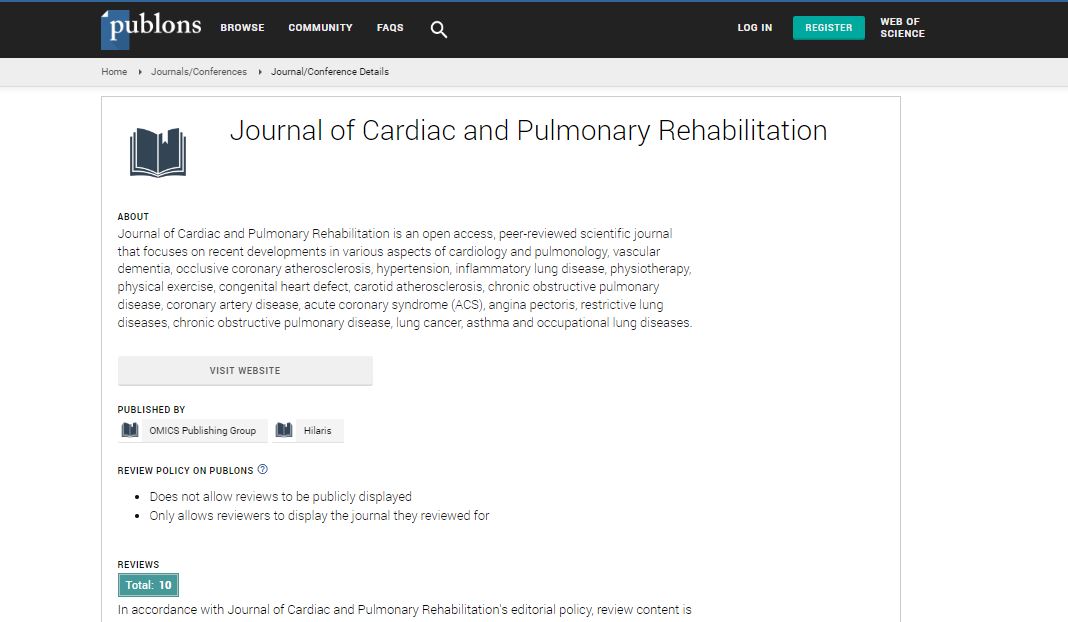Research Article
Changes in Eating Behavior of Cardiac Rehabilitation Participants and Their Partners
Yates BC1*, Brugh J2, Kuchera A1, Kupzyk K1, Choquette B3, Staskiewicz K3, Krogstrand KS4 and Hanson CK5
1College of Nursing, University of Nebraska Medical Center (UNMC), Omaha, Nebraska, USA
2Nebraska Methodist Hospital, Omaha, Nebraska, USA
3Cardiopulmonary Rehabilitation, Nebraska Methodist Health System, Omaha, Nebraska, USA
4Department of Nutritional Sciences and Dietetics, University of Nebraska-Lincoln, USA
5College of Allied Health Professions, UNMC, Omaha, Nebraska, USA
- *Corresponding Author:
- Yates BC
Professor, College of Nursing
University of Nebraska Medical Center (UNMC), Omaha
NE 68198-5330, USA
Tel: 402-559-5460
Fax: 402-559-81811
E-mail: bcyates@unmc.edu
Received date: April 25, 2017; Accepted date: May 17, 2017; Published date: May 22, 2017
Citation: Yates BC, Brugh J, Kuchera A, Kupzyk K, Choquette B, et al. (2017) Changes in Eating Behavior of Cardiac Rehabilitation Participants and Their Partners. J Card Pulm Rehabil 1:105.
Copyright: © 2017 Yates BC, et al. This is an open-access article distributed under the terms of the Creative Commons Attribution License, which permits unrestricted use, distribution, and reproduction in any medium, provided the original author and source are credited.
Abstract
Purpose: The purpose of this study was to describe patterns of change over time (pre- and post-cardiac rehabilitation [CR] and 3 months later) in eating behavior (intake of total calories, total fat, saturated fat, monounsaturated and polyunsaturated fatty acids, trans-fats, omega-3 fatty acids, cholesterol, sodium, sugar, fiber, and alcohol) in CR patients and their partners.
Method: A repeated measures design was used to examine the real-life changes that occur in coronary artery bypass graft (CABG) surgery patients and partners in response to outpatient CR. This was a secondary analysis of data from a randomized clinical trial that tested the effects of the Partners Together in Health (PaTH) Intervention versus usual care in improving physical activity and healthy eating behaviors in CABG patients and their partners. Eating behavior was measured at baseline (entrance in CR), 3-months (post-CR), and 3 months later (6-months) in 34 patients and 34 partners using 3-day food records. Changes over time were examined using repeated measures analysis of variance (RMANOVA) tests. In addition, descriptive comparisons were made between eating behavior and guidelines from the American Heart Association (AHA).
Results: Surprisingly, few significant changes in eating behavior were found for either patients or partners. For patients and partners at each time point, percent of calories from fats was 31-33% (AHA=25-35%), percent from saturated fats was 10% (AHA<5-6% of total calories), trans-fat intake ranged from 2.5-3.0 g/day, and omega-3 intake ranged from 1.54-1.66 g/day. Percent of calories from mono- and polyunsaturated fats also remained stable over time with polyunsaturated fats being the lowest percent of fat that patients and partners were consuming. Sodium intake averaged >2800 mgs/day for patients and >2500 mgs/day for partners and was above the recommended daily level for both normotensive (2400 mg/day) and hypertensive individuals (1500 mg/day) at all 3 time points. Similarly, added sugar intake ranged from 44-52 g/day for patients and 41-55 g/day for partners and was greater than the recommended amount of 30 g/day. Intake of total fiber was <21 g/day for patients and <18 g/day for partners and was below the recommended amount (25-35 g/day) at all 3 time points. In partners, cholesterol intake increased significantly over time (p<0.05).
Conclusions: Patients and partners met dietary AHA guidelines in relation to percent of calories from fat; but did not meet guidelines in relation to intake of saturated fat, sodium, added sugar (too much) and fiber (too little). Standard CR educational methods may not be adequate to assist CABG patients and partners make the dietary changes needed after a cardiac event. Innovative care management models are needed to motivate patients and partners to take a more active role in improving their eating behavior both during and post-CR.

 Spanish
Spanish  Chinese
Chinese  Russian
Russian  German
German  French
French  Japanese
Japanese  Portuguese
Portuguese  Hindi
Hindi 
